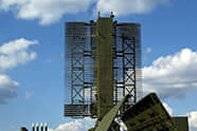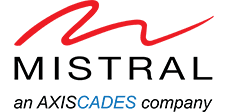Introduction
Having a defined set of standards is increasingly becoming a necessity in the current IP-based video surveillance environment; to ensure interoperability between the various feature-rich IP video devices that are being made available in the market. Lack of standards, in addition to limiting customer choice, increases integration costs for end users, integrators and manufacturers.This article covers the two groups pursuing the common goal of bringing interoperability to IP physical security devices, and highlights the advantages standards bring to the entire physical security community – end users, system integrators and product manufacturers.
- ONVIF
- PSIA
Benefits of an open standard
The benefits of an open standard for video surveillance include:
- Interoperability
Products from different manufacturers can be used in the same systems and “speak the same language” - Reduced total cost
Interoperability result in less integration costs and enables end-users to opt for the most suitable combination of network video and associated products, regardless of the manufacturer - Flexibility
End-users and integrators are not locked within proprietary solutions based on technology choices of individual manufacturers - Future-proof
Standards ensure that there are interoperable products in the market, no matter what happens to individual companies - Quality
As the products conform to a standard, the market knows what to expect from them.
Standards:
PSIA and ONVIF were formed in 2008, just a few months apart, to create standards-based interfaces for physical security hardware and software platforms. These two groups are pursuing the same fundamental goal of bringing interoperability to IP-based security systems.
ONVIF
ONVIF (Open Network Video Interface Forum) is an open industry forum for the development of a global standard for the interface of IP video products. ONVIF is committed to the adoption of IP video in the security market. The ONVIF group is led by Axis Communications, Sony Corporation and Bosch Security Systems. The ONVIF specification aims to ensure interoperability between IP video products regardless of manufacturer.
The ONVIF’s objective is to:
- Standardize the communication between IP video devices
- Ensure interoperability between IP video products regardless of manufacturer
The ONVIF specification defines a common protocol for the exchange of information between IP video devices including automatic device discovery, video streaming and intelligence metadata. It aims to be a global interface standard, which will make it even easier for end users, integrators, consultants and manufacturers to take advantage of the possibilities offered by IP video technology.
PSIA
PSIA (Physical Security Interoperability Alliance) is a global consortium of more than 50 physical security manufacturers and system integrators focused on promoting interoperability of IP-enabled security devices across all segments of the security industry. Participating companies include Adesta, Arecont Vision, Cisco Systems, GE Security, Genetec, Honeywell, IBM, Johnson Controls, March Networks, Milestone Systems, NICE Systems, ObjectVideo, OnSSI, Pelco, SCCG, Stanley Security, Texas Instruments, Tyco International, Verint and Vidsys.
PSIA’s objective is to develop standards relevant to networked physical security technology across all segments including video, access control, analytics and software.
A close look shows that both the standards are fairly similar. Both offer common capabilities to manage and control devices to provide interoperability among various products. Each specification provides mechanisms and guidelines to discover and manage devices, network configuration, analytics, PTZ configuration, streaming over HTTP/RTSP and security.
ONVIF standard is popular any companies providing high-end video devices with analytics and camera configurations, whereas, companies that need to control devices for PTZ, along with other services like storage and PSIM, are adopting PSIA, which is more appropriate for the area of physical security, other than video.
Conclusion
ONVIF is more focused on IP video, particularly cameras and analytics, while. PSIA has defined specifications, which are more general for the broader physical security market. The PSIA specifications include access control, storage and more, rather than just IP video. Some companies have joined both PSIA and ONVIF. For now, both standards will co-exist, but since, supporting two specifications could make a product heavy, in the long run the two standards may merge; considering there are members common to both.



